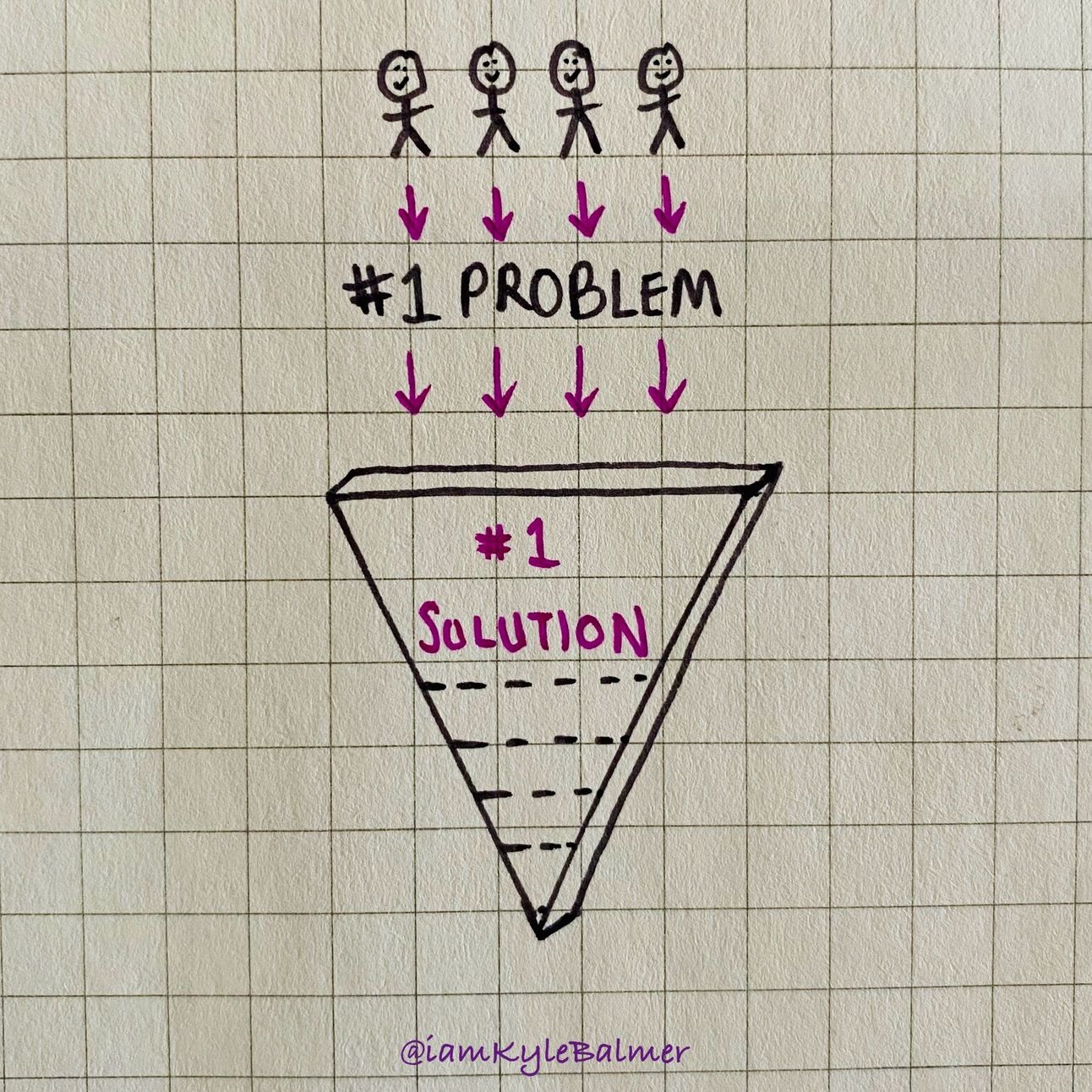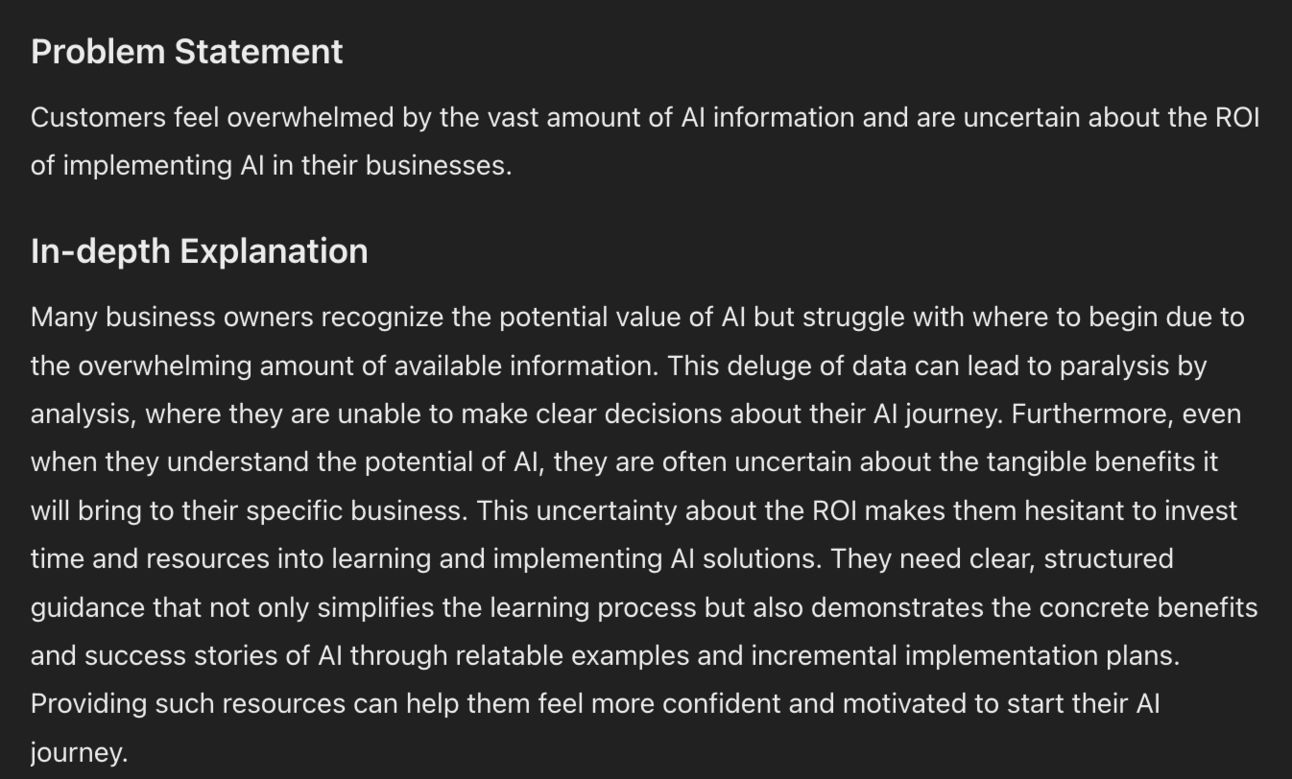Part 2 - The common thread
To bring things back into focus, in this playbook we’re constructing a sales funnel. Regardless of your business having a proper funnel in place will radically upgrade your revenue potential.
Instead of just slapping together whatever products we have on hand we’re going to start by working out exactly how to get people through our funnel.
We’re focusing on the common thread that ties it all together.
Let’s get started:
The common thread
- solve problems
- solve the same problem at different levels
- knowing your customers’ problems
- mapping problems to a sales funnel
Business provide value to customers by solving problems.
Sometimes this is obvious - like a coach or consultant. They are specifically tasked with helping customers to solve problems and move towards a better life.
Sometimes this is less obvious - luxury fashion for example. Here the problem the customer has is needed to fit in (or stand out!) by possessing certain items. The item itself is less important than the problem of “belonging” that it solves.
Either way the business provides values by identifying and solving the problems its customers have.
The bigger the problem the more the business can charge.
The more people that have that problem the greater the customer base.
Before you start building your sales funnel you therefore need to know the core problem that you are helping your customer to solve.

What’s your problem??
Let’s use a questioning prompt here:
Help me identify my customer's true problem
I run a business in the [topic] niche
Ask me about my customer's common difficulties. Collect my answer and suggest a deeper level of motivation. Provide several options and suggestions. Again ask for feedback and repeat 3 times.
When we settle on a root problem relay it back to me in a short succinct problem statement followed by an in-depth explanation.I ran this process of the niche of “teaching AI to businesses” an received the following:

Ultimately only your customers can reveal their true problems. But this is a good place to start.
We can get deeper into the truth by:
- asking our customer via surveys, polls and interviews
- seeing what content and marketing messages they respond to
- what they purchase
This is all iterative. The more time you spend in the space serving your customer the more you’ll learn about what problems they are facing and (ultimately) how to help them.
Mapping problems to our funnel
Once we have an idea of the core problems our customer face we can map out our funnel.
Importantly our funnel solves the same problem, just at different levels of details and implementation.
This is super important. Read it again. It’s the same problem we are solving.
The customer’s problem becomes the common thread we hold to.
Let’s use a second prompt under the first:
Act as a marketing manager
Construct a sales funnel that solves my customer's primary problem
Each stage of the funnel will solve the problem in more detail and providing more hands-on help and implementation
My niche is [topic]
My target audience is [provide details]
The stages of the funnel are:
Audience generation
Lead magnet
Tripwire offer
Core offer
Upsale
Premium
For each provide a handful of optionsThis will take your customer problem and construct a funnel for you. The prompt is set up to give options for each element in the funnel.
If you already have certain elements (ie. you already have a core product) then specify this in the prompt. This will shape the rest of the funnel around extant elements.
Be careful with this though as your existing products may not actually be the best fit for your funnel! It’s tempting to try to squish together products we’ve already created into a funnel but that funnel may end up being an inefficient Frankenstein.
Won’t I lose customers?
One concern is that by giving solutions to our customers early in the funnel we’ll solve their problem and never be able to sell anything to them.
For example if I give away a free checklist then why would anyone buy my course later?
Some people will indeed be able to use your free and low cost content to “work it all out” themselves.
These people are in the minority. We’re talking 1-5% of people.
And guess what: these are the people who were going to work it out for themselves anyway! They have more time than money. They weren’t your customers and never will be.
The vast majority of people will want more from you. If they found your free checklist useful then they are more likely to take you up on your next offer. You’ve built trust already and become the obvious choice for the next step.
At each stage even when they make progress they’ll realise there’s more to do. More to solve. More need for your particular expertise and solutions.
And as such they’ll keep moving down the sales funnel.
Preliminary funnel
You do not have to know exactly what elements will go in your sales funnel.
You’ll always be testing and tweaking the exact best mix.
The main thing right now is to know the general “directionality” of the funnel - ie. the customer problem that the funnel solves - as well as a rough order of the elements.
We’ll be covering each element of the funnel in the rest of the Parts, starting at the beginning and moving further along each time.
Generally you’ll want to crack each element before moving to the next. Once you nail the lead magnet for example you know you’ll have a steady flow of customers for your tripwire and onto core offer.
But if you haven’t sorted the lead magnet then the later elements don’t matter!
As such we’ll cover each in turn in the order of deployment over the next three Parts.